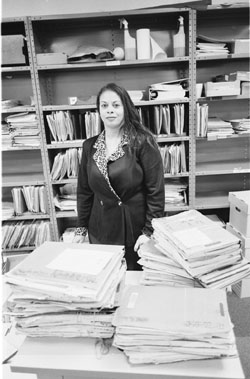Dragon Info System Breakdown Gettng people Jobs Zen Hienes-the hard core cases Refugee Program
|
The System is Breaking Down Dec. 2001 Many workers on the front end of the CalWORKS system report that for them, welfare reform has been a disaster. “We want to give the clients the best services possible, but the volume of work is overwhelming. It was tolerable before CalWORKS, but now the volume of work prevents us from serving the customers the way you would want to,” stated one worker who has been an eligibility technician for 29 years.
When someone applies for aid, the first person to process the claim is an intake worker. The worker evaluates the claim, makes a determination, and sends the case on for processing. Most people apply for aid because their situation has become desperate and they are running out of money. So processing the claim rapidly is important. Unfortunately, regulations under welfare-to-work have vastly increased the requirements and documentation to the point that the front end has bogged down. “We can’t get rid of cases in a timely manner,” states Patsy Pettit, an eligibility technician who evaluates applicants for cash aid, food stamps, and medical benefits. “Intake approves or denies a person, which should take about three days, and the case should go to the bank center. The way the process is structured right now, we keep cases for months. We have to help the new people coming in at the same time we have to manage the old cases. The situations in these clients’ lives change rapidly, so you have to go back and update the backed-up cases. “And now all our cases are audited. There is an audit unit that goes through them with a fine tooth comb and critiques the way the applicant filled out the application. A lot of the applicants aren’t as educated as they could be, or whatever, so we have to try pretty hard to get the applications to make sense.” Cases are much more complicated Now there are many more requirements. The application form in Alameda County is 14 pages long. Workers have to check for felony arrests, make sure the clients don’t have drug convictions, and track the aid clients may have received in other counties. There are different regulations for children born after September 1997, requiring another set of paperwork. Pettit sums it all up: “I don’t regret welfare reform at all. They pay a lot more child care than before, and many more women are working, which is positive. But it has created a lot more duties and complicated our cases. I just wish they would look at what we are doing and make workload changes. I never used to get complaints from clients, and now they are calling the operator and she is taking notes to my supervisor. I never had that before.”
|
|||||||||



